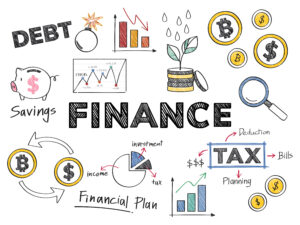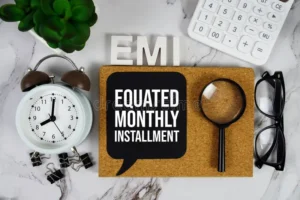Rental Arbitrage: How to Earn With Short-Term Sublets Without Owning Property
The Shortcut to Real-Estate Income Without Owning Homes
Imagine earning rental income every month without a mortgage, down payment, or even owning a single home. Sounds unreal? That’s the magic of rental arbitrage — a smart, low-barrier way to step into the property income world using strategy instead of capital.
In simple terms, rental arbitrage means leasing a property long-term and re-renting it short-term (through platforms like Airbnb or Vrbo). The difference between what you pay the landlord and what you earn from guests becomes your profit. It’s an exciting business model for regular people looking to build real side income fast.
What Is Rental Arbitrage (and How Does It Work)?
Rental arbitrage works on a straightforward principle — you rent, furnish, and manage someone else’s property as if it were your own business.
Here’s the formula:
Long-term lease → Short-term rent → Keep the profit difference.
For example:
You lease an apartment for $1,200 per month. After listing it on Airbnb and keeping it booked, you earn $2,400/month.
After expenses like cleaning, maintenance, and utilities, you might clear $800–$1,000 in net profit — all without owning the place.
Why Rental Arbitrage Is Growing So Fast
Rental arbitrage is booming globally because it fits today’s economy:
- 🏡 Low capital entry — no need for big down payments.
- 💼 Flexible side hustle — manage part-time or scale into a full business.
- 🌍 Digital platforms simplify everything — booking, marketing, payments.
- 💰 High-return potential — more profitable than long-term leases in tourist or city areas.
This business thrives where short-term rental demand is high — near universities, hospitals, or city centers.
How to Start Rental Arbitrage (Step-by-Step Guide)
Step 1: Research Local Rules and Laws
Every city has different short-term rental regulations.
✔ Check zoning laws, permits, and taxes.
✔ Some areas limit the number of nights you can rent per year.
✔ Always operate transparently to avoid fines or bans.
(Pro tip: Start with one property to test compliance and demand before scaling.)
Step 2: Find the Right Property
Look for:
- Safe neighborhood with steady visitor demand.
- Good transport links, Wi-Fi, and amenities.
- Landlords open to subleasing (honesty builds long-term partnerships).
When contacting landlords, explain your plan clearly: you’ll keep the property clean, maintained, and fully insured — that builds trust.
Step 3: Negotiate and Sign a Legal Lease
Never hide your intentions.
Include a sublease clause in your contract allowing short-term rentals.
Use a written agreement reviewed by a legal professional — this boosts credibility and protects both sides.
Step 4: Design an Irresistible Space
You don’t need luxury — you need comfort + aesthetics.
- Invest in durable furniture and warm lighting.
- Add small touches like coffee pods, fast Wi-Fi, and smart locks.
- Use local décor to create a memorable experience.

Airbnb design guide on airbnb.com/resources)
Step 5: List Your Property on Multiple Platforms
Diversify to maximize bookings:
- Airbnb
- Booking.com
- Vrbo
- Furnished Finder (great for travel nurses or remote workers)
Use professional photos and an optimized listing title (include city name + features).
“Clever Ways to Shop and Keep More Money in Your Pocket” for furnishing budget tips.
Step 6: Automate Management
Tools like Guesty or Hostaway automate messaging, cleaning schedules, and reviews.
This helps you maintain multiple listings stress-free.
Remember, positive guest reviews = higher ranking = more income.
Step 7: Calculate Your Profits Smartly
Keep a detailed budget for:
- Monthly rent
- Utilities
- Cleaning fees
- Maintenance
- Platform commissions
Example profit formula:
$2,400 (income) – $1,400 (costs) = $1,000 net profit/month.
“Easy Habits to Manage Your Money Better”
Advanced Strategies to Maximize Profits
- Negotiate Multiple Units
Once you prove success with one unit, negotiate for more from the same landlord — scaling increases your bargaining power. - Offer Mid-Term Rentals (30–90 days)
Target travel professionals and students; less turnover, consistent income. - Create a Brand
Give your properties a consistent look and name (e.g., “UrbanStay Suites”). Brand recognition boosts trust. - Dynamic Pricing
Use tools like Beyond or PriceLabs to adjust nightly rates based on demand. - Add Extra Services
Offer airport pickups, local guides, or food delivery coordination. Small upsells increase margins.
Risks and Legal Considerations
Rental arbitrage isn’t risk-free. You must manage:
- Vacancy risk: slow seasons can reduce income.
- Regulatory risk: sudden rule changes may restrict operations.
- Landlord relations: ensure transparent communication.
- Upfront costs: furniture, insurance, permits.
To stay compliant:
- Register for local short-term rental permits.
- Maintain insurance coverage (property + liability).
- Pay income taxes properly — this strengthens your business reputation.

IRS rental income guide — irs.gov/taxtopics/t414)
Is Rental Arbitrage Really Profitable?
Yes — with planning. A well-managed property can earn 25–50% ROI annually. The key is location, pricing, and guest experience.
It’s not a “get-rich-quick” model, but it can be the gateway to financial freedom and real-estate investing without owning a house.
Build an Income Stream That Works While You Sleep
Rental arbitrage turns ordinary renters into entrepreneurs.
By mastering leases, design, and guest satisfaction, you can create an income stream that grows without massive capital.
Start small, stay legal, reinvest profits — and within months, you could run a portfolio of short-term rentals that pay you while you sleep.













Post Comment